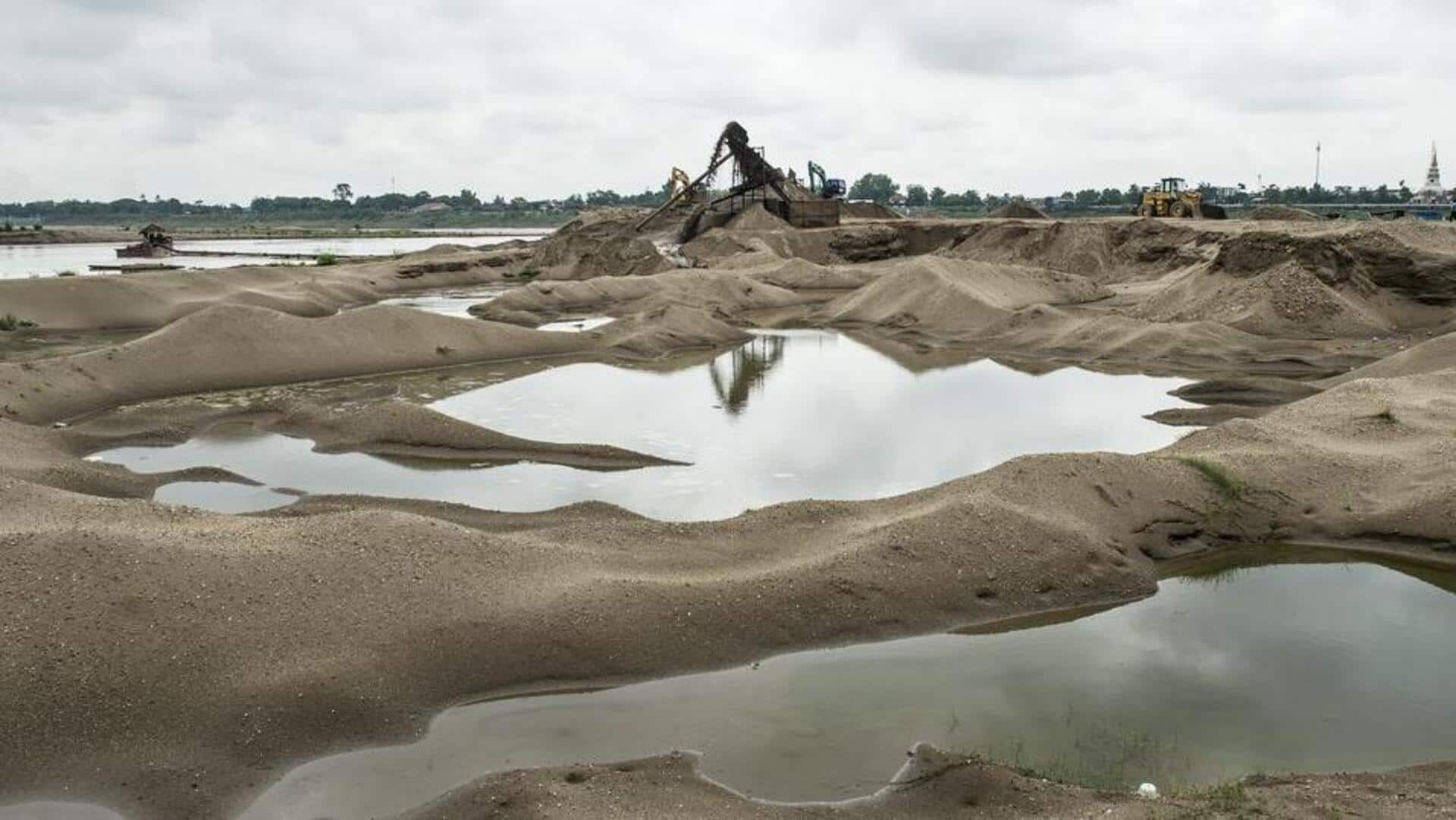
Unregulated rare earth mining in Mekong threatens Southeast Asia's lifeline
What's the story
The growing global demand for rare earth minerals is causing severe pollution in some of Asia's most critical river systems. The Mekong River, a vital waterway that runs through six countries and sustains nearly 70 million people, is particularly at risk. A recent study by the US-based think tank Stimson Center has identified over 2,400 potential sites of unregulated mining activity across mainland Southeast Asia.
Environmental impact
Unregulated mines pose serious environmental threats
Many of these unregulated mines are located in conflict-ridden areas of Myanmar. They could be discharging toxic pollutants like cyanide, mercury, arsenic and other heavy metals into the region's rivers. "It's having such an environmentally impactful effect, everything is accumulating here to a potentially disastrous result for the Mekong," said Regan Kwan, research analyst with the Stimson Center and lead researcher of the project.
Mining methods
Mining techniques and their environmental consequences
The study found unregulated mining activities on or near 43 rivers in Myanmar, Laos, and Cambodia. These include alluvial mining (for gold or silver and tin), in-situ leaching (for rare earths), and heap leach (for gold or copper, nickel, and manganese). Each of these methods uses different techniques to extract metals/minerals, often involving other chemicals like mercury or sodium cyanide that can leak into the environment if not properly contained.
Community impact
Pollution concerns impact downstream communities
Concerns about upstream pollution have affected downstream communities along Thailand's Kok River, near the Myanmar border. Tests reportedly detected arsenic and other minerals in the water. "No one will eat the fish now out of the river," Kwan said, adding that these people are subsistence farmers who need to grow food for themselves and sell it.
Resource exploitation
Rare earths: A double-edged sword
Rare earths include 17 metallic elements used in everything from cars to jet engines and electronics. They are also essential for electric vehicle batteries, MRI machines, and cancer treatments. However, despite being more abundant than gold, these elements are difficult and expensive to extract. Unregulated mining has thrived in areas with lax regulations or active conflict zones.
Mining hub
Myanmar's role in rare earth mining
Myanmar is one of the world's biggest producers of rare earths, accounting for nearly 80% of unregulated mining activity identified by the Stimson Center. The country has long been a mining hub for jade, rubies, gold, copper and other minerals. However, since a military coup in 2021 and rising gold prices, illegal mining activities have increased significantly.